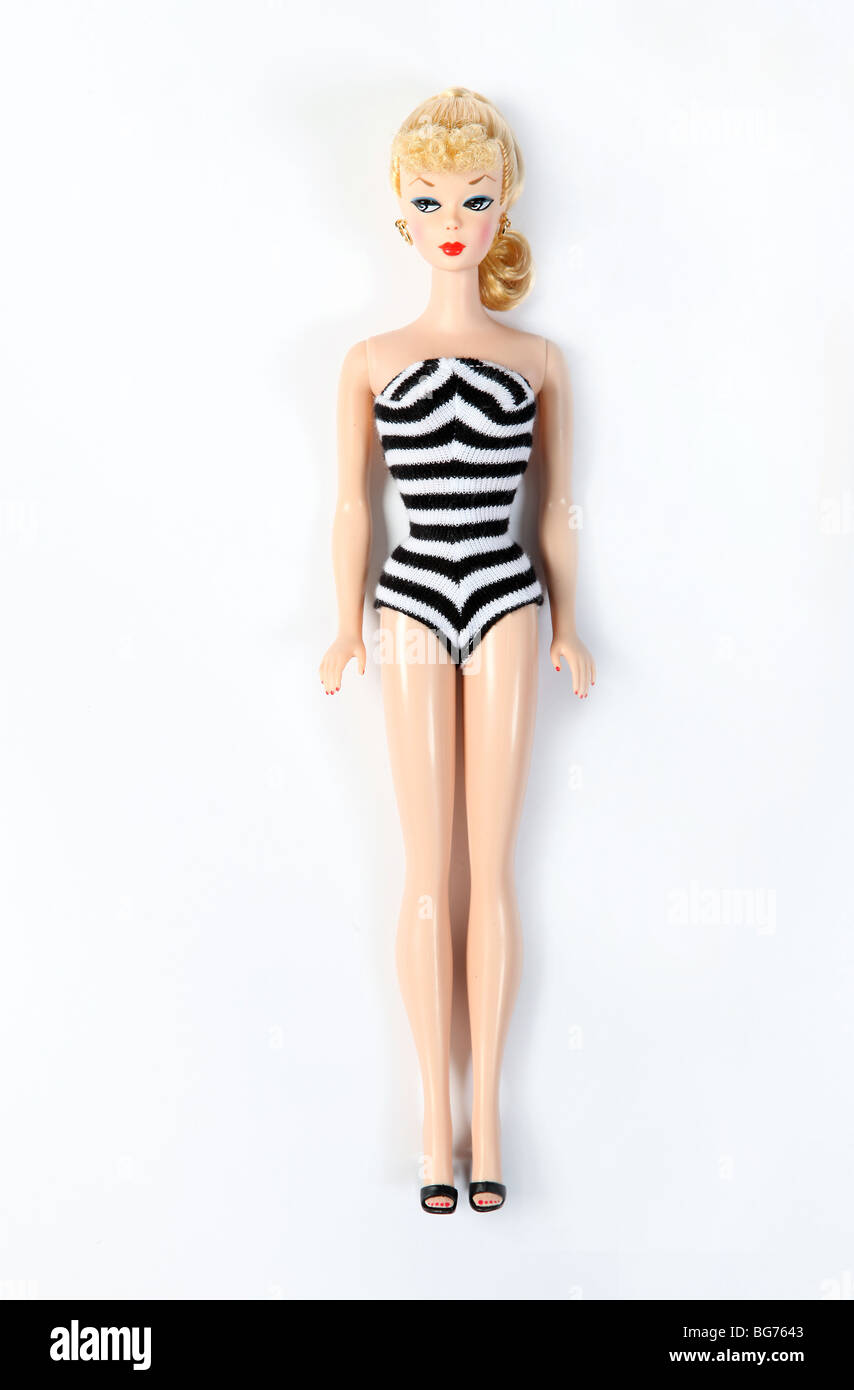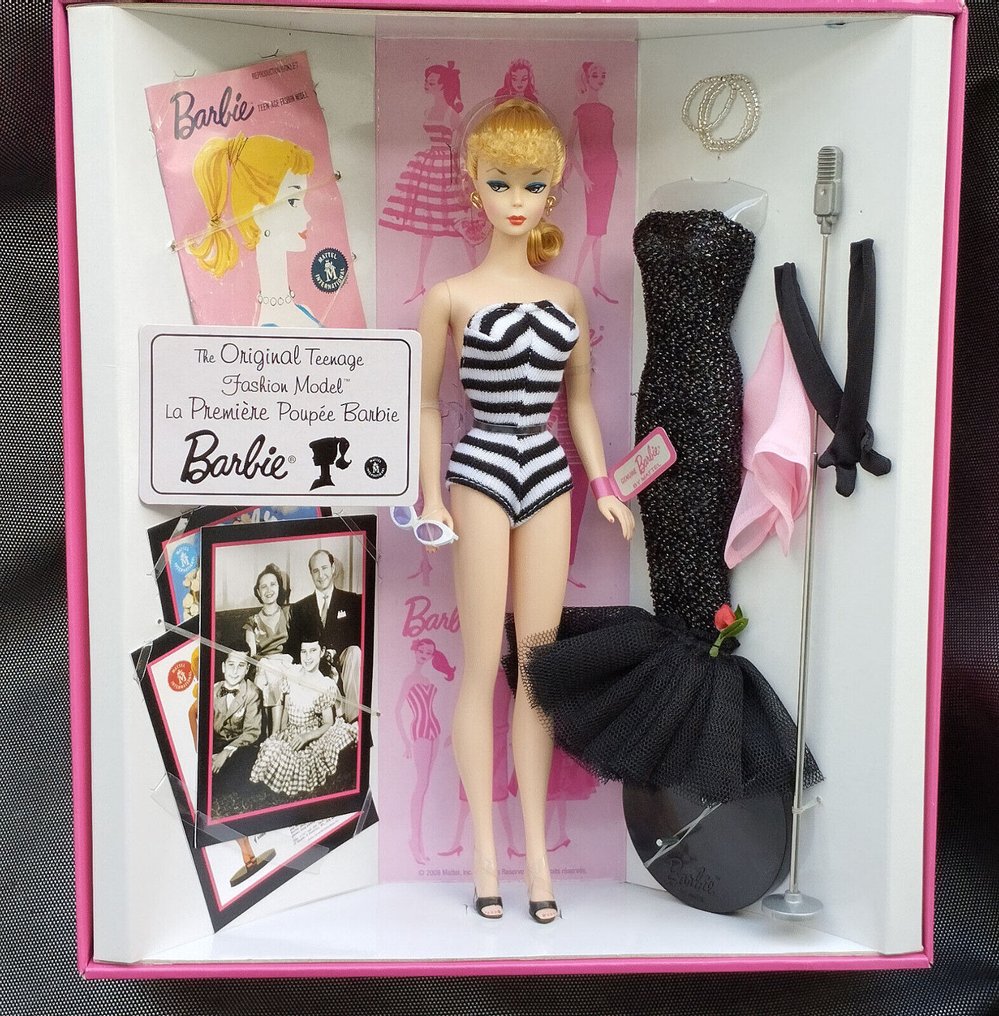1950's Barbie Doll: A Nostalgic Journey Through Time
When the 1950's Barbie doll comes to mind, many people think of an era filled with charm, elegance, and timeless beauty. This iconic toy has left an indelible mark on the world of fashion and pop culture, capturing the hearts of countless generations. The Barbie doll from the 1950s represents more than just a toy; it is a symbol of empowerment and creativity that continues to inspire millions worldwide.
The 1950s marked a transformative period in history, and the introduction of the Barbie doll during this time was nothing short of revolutionary. As a representation of modernity and progress, Barbie quickly became a cultural phenomenon, appealing not only to children but also to collectors and enthusiasts alike. Her presence in households across the globe was a testament to her influence and the impact she had on shaping societal norms.
In this article, we will delve deep into the world of the 1950s Barbie doll, exploring her origins, evolution, and enduring legacy. From her design and production to her role in shaping childhood memories, this article aims to provide a comprehensive understanding of why the 1950s Barbie doll remains an icon even today. Let’s embark on this nostalgic journey together!
Read also:Is Puff Daddy Really Dead Debunking The Myths And Exploring The Truth
Table of Contents
- Origins of the 1950's Barbie Doll
- Design and Features of the 1950's Barbie
- Manufacturing Process in the 1950s
- Popularity and Cultural Impact
- 1950's Barbie Dolls as Collectibles
- Variants and Special Editions
- Market Value and Investment Potential
- Influence on Fashion and Design
- Criticism and Controversies
- Legacy and Future Prospects
Origins of the 1950's Barbie Doll
The creation of the Barbie doll in the 1950s was inspired by Ruth Handler, the co-founder of Mattel. While on a trip to Europe, Ruth observed a German doll named Bild Lilli, which sparked her idea for a fashion doll that could appeal to both children and adults. Recognizing the potential of such a concept, Ruth collaborated with her team at Mattel to bring Barbie to life in 1959.
Key Influences Behind Barbie's Creation
Several factors contributed to the development of the 1950s Barbie doll:
- Ruth Handler’s vision for a doll that transcended traditional playtime
- Market demand for a more sophisticated and versatile toy
- Inspiration drawn from the fashion industry of the time
These influences helped shape the identity of the Barbie doll, setting the stage for her global success.
Design and Features of the 1950's Barbie
The design of the 1950s Barbie doll was meticulously crafted to reflect the fashion trends and aesthetics of the era. From her iconic blonde hair to her stylish outfits, every detail was carefully considered to ensure authenticity and appeal.
Key Features of the 1950s Barbie
- Slender figure with articulated joints
- Vintage hairstyles inspired by Hollywood stars
- Custom-designed clothing and accessories
Each feature was designed to enhance the playability and visual appeal of the doll, making her a favorite among young girls and collectors.
Manufacturing Process in the 1950s
The manufacturing process for the 1950s Barbie doll involved cutting-edge techniques for the time. Mattel utilized advanced molding and assembly methods to ensure consistency and quality in production. The use of high-quality materials, such as vinyl and plastic, ensured durability and longevity.
Read also:Virgo Man Best Match Exploring The Ideal Zodiac Pairings For Virgo Men
According to historical records, the production of Barbie dolls in the 1950s was a meticulous process that required precision and attention to detail. This commitment to quality helped establish Barbie as a premium product in the toy industry.
Popularity and Cultural Impact
The popularity of the 1950s Barbie doll skyrocketed shortly after her introduction. She quickly became a staple in households across the United States and beyond, symbolizing the aspirations and dreams of young girls everywhere. Barbie's influence extended beyond the toy aisle, permeating various aspects of popular culture.
Cultural Significance
- Representation of female empowerment and independence
- Inspiration for future generations of designers and entrepreneurs
- Reflection of societal norms and values during the 1950s
Barbie's impact on culture cannot be overstated, as she continues to inspire discussions about gender roles, beauty standards, and self-expression.
1950's Barbie Dolls as Collectibles
For many enthusiasts, the 1950s Barbie doll holds immense value as a collectible item. These dolls, often referred to as "vintage Barbies," are highly sought after by collectors due to their historical significance and rarity. Their value has increased over the years, making them a lucrative investment for those in the hobby.
Factors Influencing Collectible Value
- Condition and preservation of the doll
- Rarity and limited production runs
- Original packaging and accessories
Collectors often spend years searching for the perfect piece to add to their collection, driven by a passion for nostalgia and history.
Variants and Special Editions
The 1950s Barbie doll came in various forms, including different skin tones, hairstyles, and outfits. These variants were designed to cater to diverse audiences and reflect the changing times. Additionally, Mattel released special editions to commemorate significant events and milestones.
Notable Special Editions
- Anniversary editions celebrating key years in Barbie's history
- Limited releases inspired by popular culture and trends
- Collaborations with renowned designers and artists
These special editions added to the allure of the 1950s Barbie doll, further solidifying her status as a cultural icon.
Market Value and Investment Potential
The market for 1950s Barbie dolls continues to thrive, with prices ranging from a few hundred to several thousand dollars depending on the condition and rarity of the item. Collectors and investors alike recognize the potential for appreciation, making these dolls a wise investment choice.
According to a report by Collectors Weekly, the value of vintage Barbie dolls has steadily increased over the past few decades, fueled by growing interest in nostalgia-driven collectibles.
Influence on Fashion and Design
The 1950s Barbie doll played a pivotal role in shaping the fashion industry, inspiring countless designers and brands. Her iconic style and timeless elegance continue to influence contemporary fashion trends, proving that her legacy endures.
Impact on Modern Design
- Inspiration for high-end fashion collections
- Influence on toy design and production
- Collaborations with leading fashion houses
Barbie's influence extends beyond the toy industry, reaching into the realms of art, entertainment, and beyond.
Criticism and Controversies
While the 1950s Barbie doll has been celebrated for her contributions to culture, she has also faced criticism regarding body image and societal expectations. Critics argue that her unrealistic proportions perpetuate harmful stereotypes about beauty and femininity.
Despite these criticisms, Mattel has taken steps to address these concerns by introducing diverse representations and empowering messages through Barbie's branding. These efforts aim to foster a more inclusive and positive image for future generations.
Legacy and Future Prospects
The legacy of the 1950s Barbie doll remains strong, with her influence continuing to shape the world of toys, fashion, and culture. As technology advances and societal norms evolve, Barbie adapts to meet the needs and expectations of modern audiences.
In conclusion, the 1950s Barbie doll represents much more than a simple toy. She embodies the spirit of innovation, creativity, and empowerment that has inspired millions over the decades. We invite you to explore further articles on our site and share your thoughts in the comments below. Together, let’s celebrate the timeless charm of the 1950s Barbie doll!


